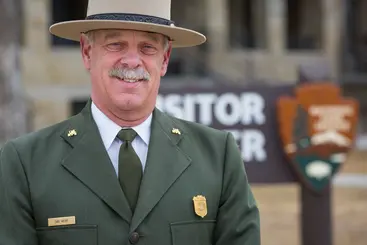Wall Drug and South Dakota: Navigating Seasonal Challenges and Cultural Richness
Wall Drug is not just a cornerstone of South Dakota’s tourism; it is a living testament to resilience and innovation. With over 2 million visitors annually, Wall Drug has transformed from its humble beginnings in 1931 into a worldwide phenomenon. Situated in Wall, South Dakota, a town of just 800 residents, it stands as a testament to the state’s ability to attract global attention.
The attraction’s popularity stems from its enticing offers of free ice water, 5-cent coffee, and delicious fresh donuts. However, behind the scenes, the operation requires a robust seasonal workforce that challenges both private businesses and federally managed attractions in South Dakota.
Sarah Hustead, the fourth-generation leader and vice president of Wall Drug, emphasizes the necessity of an international workforce to cater to the summer influx. Wall Drug’s workforce swells from 70 year-round employees to an additional 120 seasonal workers during peak months. This significant increase is largely supported by international workers engaged through the H-2B and J-1 visa programs.

Dan Wenk
“It’s a melting pot,” Hustead remarks about Wall Drug’s diverse workforce, which includes employees from Thailand, Kazakhstan, Mongolia, and Jamaica. This cultural diversity not only enriches the community but also the visitor experience.
Badlands National Park, a short drive from Wall, is another significant draw in South Dakota. Former National Parks Service (NPS) leader Mike Pflaum fondly recounts his first visit at age six, stating, “That memory of going to the first overlook and going, ‘Wow!’ has stuck with me for my entire life.” Now serving as a special adviser for the Badlands National Park Conservancy, Pflaum highlights the park’s reliance on seasonal employees to manage a range of operations.
Both Wall Drug and national parks like Badlands face common challenges, prominently seen in the domain of housing seasonal workers. Hustead has tackled this by maintaining a trailer court and acquiring houses around town, ensuring employees have a place to stay—a reflection of her commitment to both her business and the community.
Dan Wenk, another esteemed former NPS superintendent, underscores the value of seasoned workers who return yearly, fostering a knowledgeable and efficient workforce. “They understand what they needed to do and how they’re going to contribute to the things that people have come to experience and to love about national parks,” Wenk explains.
In 2025, concerns loomed due to the U.S. administration’s hiring freeze and ensuing layoffs of probationary NPS employees. Wenk expressed apprehension over how these could affect the summer visitor season. “Many very highly qualified people decided to do something else,” he shares, signaling potential long-term impacts on park operations.
The intricate relationship between private attractions like Wall Drug and federal entities such as the NPS highlights a shared goal: sustaining South Dakota’s tourism-driven economy amidst various challenges. Despite these hurdles, the sense of community between establishments remains. As Hustead conveys, “If I have a customer coming through and they’re not stopping at the Badlands, I’m like, ‘You can’t come here and not go through the Badlands!'”
For insights into how these dynamics influence South Dakota’s tourism landscape, tune into the season finale of “South Dakota Focus” on May 29. The episode will detail the collaborative efforts required to maintain this vital sector of the state’s economy. View the program on SDPB-TV1, YouTube, and SD.net.
For those interested in South Dakota’s tourism industry, the allure of the Badlands, or the enduring charm of Wall Drug, the latest episode of “South Dakota Focus” offers insider knowledge on these compelling narratives.
Contact South Dakota Public Broadcasting for further information at info@sdnewswatch.org.